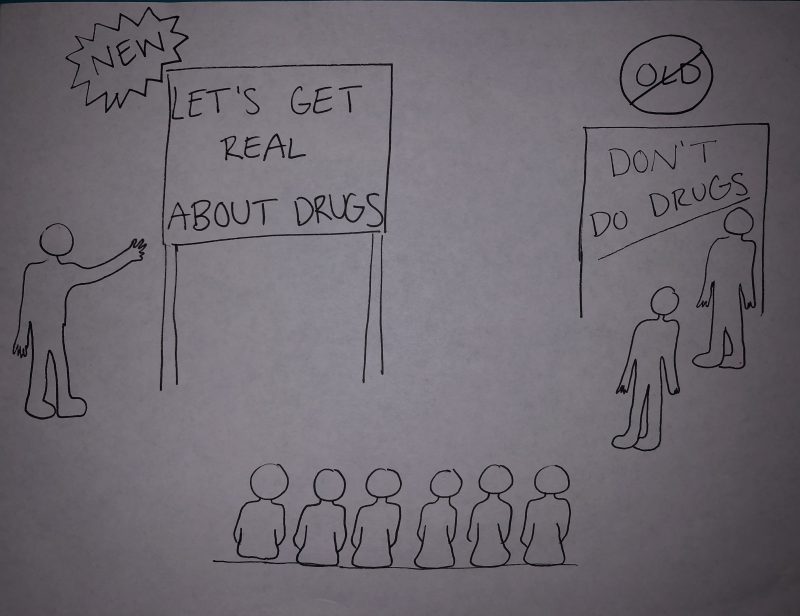At what point is someone addicted to drugs no longer capable of making the decision to continue using drugs? At what point does the long-term effect of using drugs affect the brain in such a way that it is virtually impossible to stop using drugs on your own? This is a topic that continues to be debated among both the scientific and legal communities.
Common Convention vs. A New Proposal
Currently, addicts can be held responsible for any action they take however under the influence they may be, or how far into their addiction they are. Although they are not entirely in control of their actions due to the change in their neurochemistry, the law states they are responsible for any actions that are a result of the initial decision to take drugs. So, what should be done if at some point, people are no longer physically able to make decisions for themselves other than to feed their addiction? One possible answer: change the way anti-drug campaigns are aimed at children and young teenagers.
Anti-drug campaigns traditionally have been centered around making drugs and alcohol seem as scary and unhealthy as possible. These campaigns are aimed at middle school kids who have very little prior knowledge Now although that is true, one could argue that this approach is dangerously misleading. Long-term, hard drug use can lead to extreme health decline and a loss of decision making regarding using the drugs, but this isn’t so apparent after the first use of a given hard drug. What most anti-drug campaigns don’t tell you is the reason they are so addictive is because they do give you an immediate, rewarding feeling known as a “high.” Being open and honest about this when talking about drugs could be crucial because after a kid uses for the first time and only sees the immediate pay off, they might begin to think that they were misled and that drugs truly couldn’t be that bad.
There is a happy medium between showing kids horrifying pictures of hard-core drug abuse and telling kids that drugs are as rewarding as they are rumored to be. Laying out the facts and being as honest as possible while maintaining the agenda of preventing drug abuse is a viable option.
The facts are
- Drugs do give the immediate “high” that can be very rewarding, but it is a slippery slope since most addicts don’t realize they’re addicted till it is too late
- Socially, drug users are outcasts, and being dependent on hard-core drugs makes holding down a proper job and living situation very difficult
- Hard-core drug use cannot last before major medical problems occur
Before, kids were just told drugs and alcohol are bad for you and that they should just stay away. “Trust us,” with “us” being law enforcement. And even though it is true, telling kids to simply “not do drugs” glosses over the real, addictive powers of drugs.
The Science
Cocaine or methamphetamines cause a rapid increase of dopamine that is released in the ventral tegmental area (VTA), nucleus accumbens (NA) and prefrontal cortex. These drugs are so addictive because they don’t allow for the reuptake of dopamine due to their strong binding to the dopamine-reuptake transporters. This blocking effect, which causes a long-lasting high concentration of dopamine in the synapse which go on to affect adjacent neurons, is the source of the notorious “high” feeling associated with taking cocaine and methamphetamines. Additionally, amphetamines cause the phosphorylation of cAMP response element-binding protein which goes on to affect synaptic plasticity and aide in creating the overall addictive behavior.
